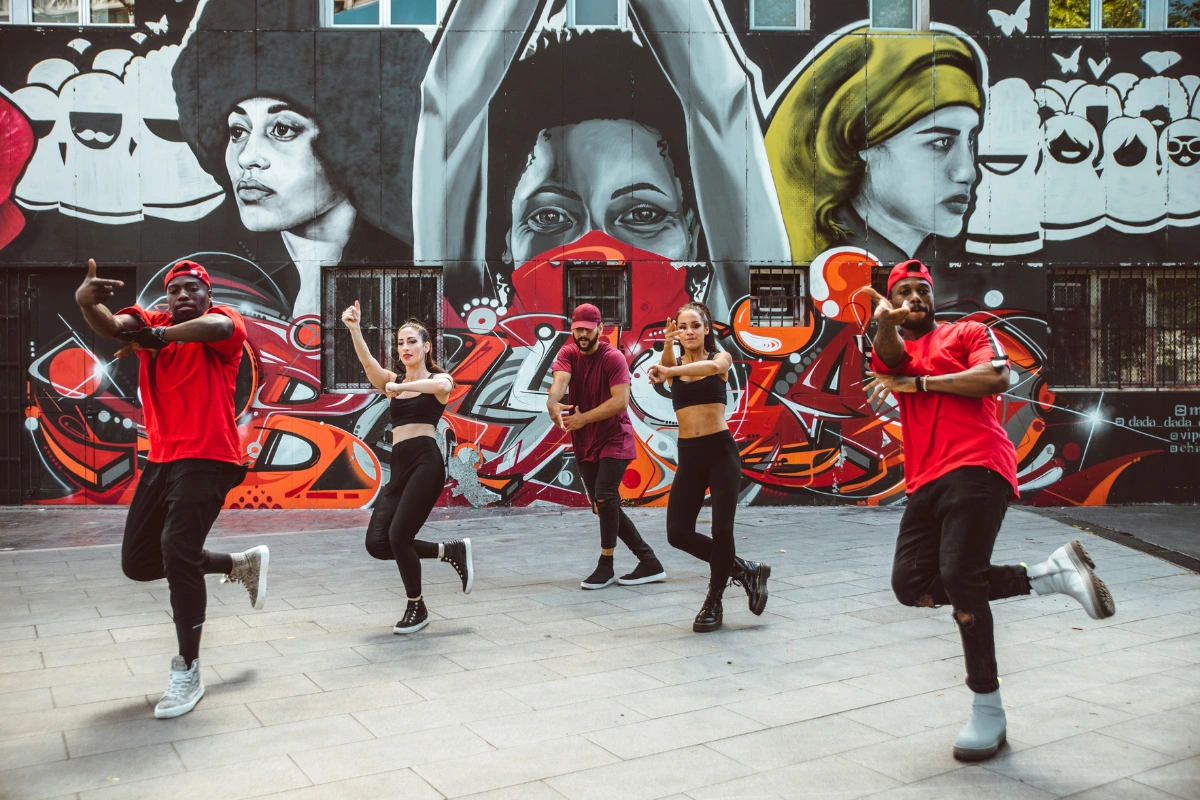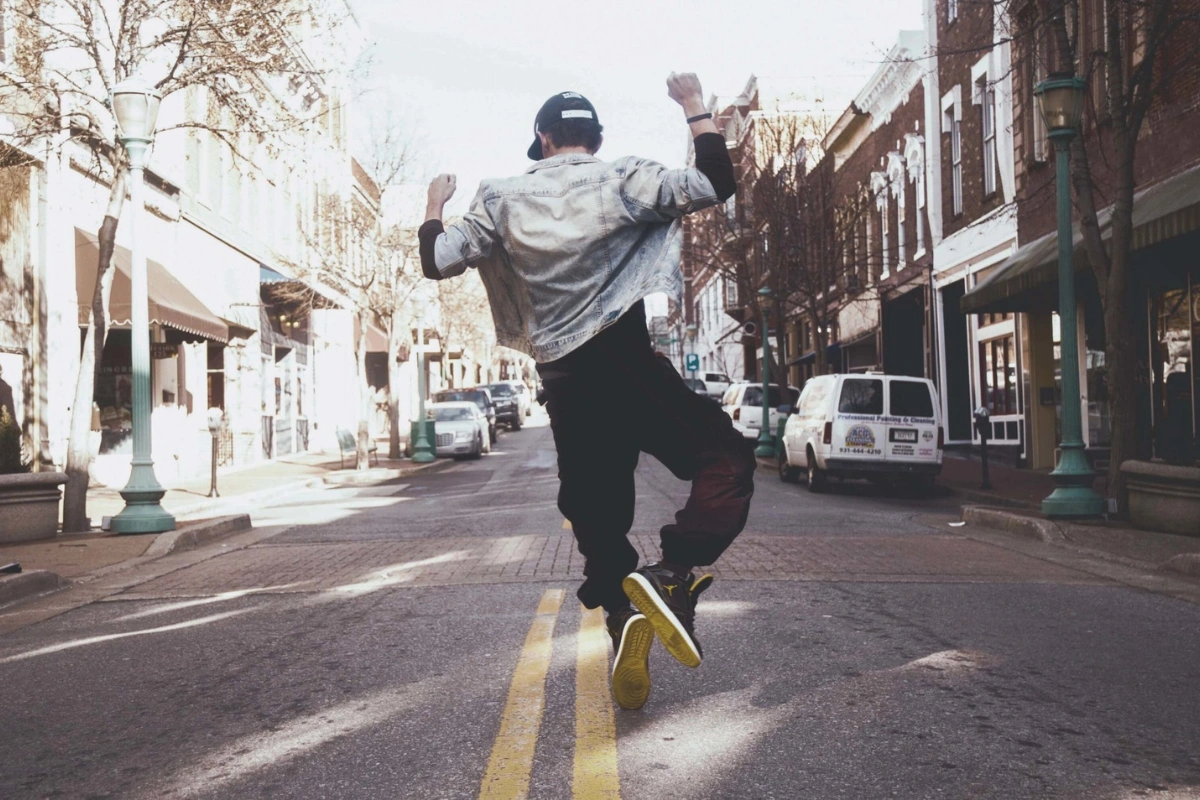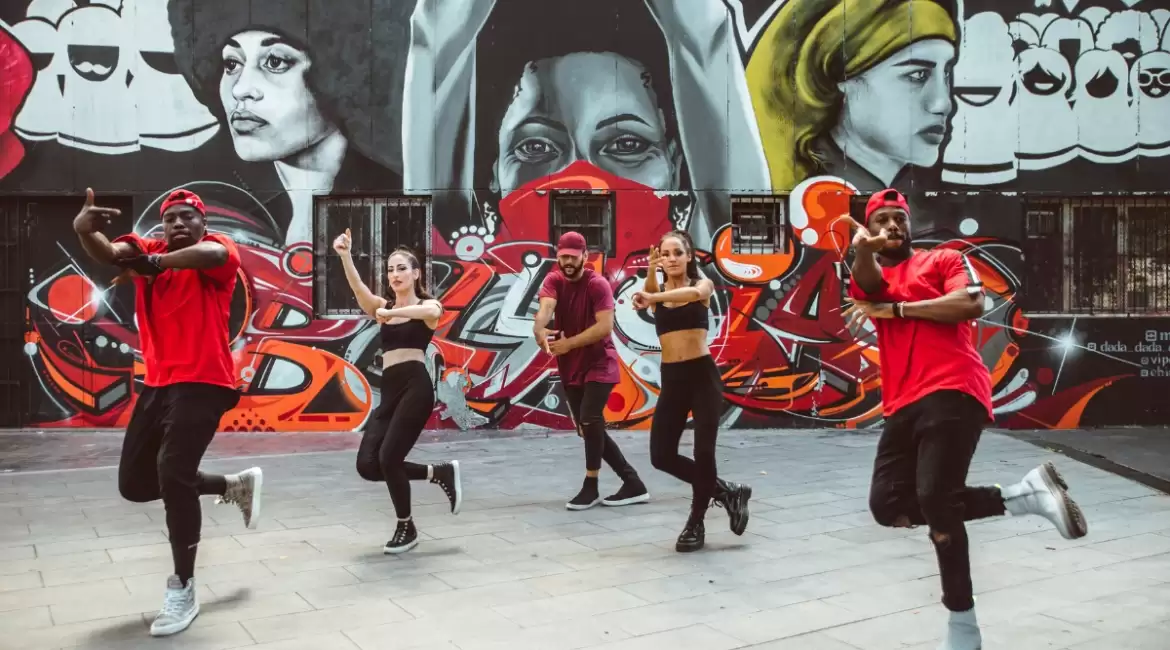Urban Dance, a dynamic and multifaceted art form, transcends mere movement to embody a vibrant cultural phenomenon that resonates with individuals around the world. Rooted in the streets and born from the diverse influences of Hip Hop, street dance, and contemporary choreography, Urban Dance represents a fusion of styles, stories, and expressions that captivates both performers and audiences alike. From its humble origins in underground clubs and community gatherings to its global prominence on stages, screens, and social media platforms, Urban Dance has evolved into a thriving ecosystem of creativity, innovation, and collaboration. In this exploration of Urban Dance, we delve into its history, its influences, its practitioners, and its impact, uncovering the rich tapestry of movement, music, and culture that defines this dynamic art form. Join us on a journey through the rhythms and movements of Urban Dance as we unravel its mysteries and celebrate its enduring legacy in the world of dance.
Urban Dance is not Hip Hop or street styles
Urban Dance is a distinct form that diverges from the realms of Hip Hop and street styles, although it shares some connections. While Hip Hop encompasses various street dance styles such as Popping, Waacking, Locking, House, and Krump, Urban Dance emerges as a separate entity through its choreographed pieces. These compositions mark a departure from the improvisational circles found in clubs and battles, which are typical environments for Hip Hop and street dancers.
The distinction between Urban Dance and its predecessors has led to the recognition of a separate cultural sphere. While Urban Dance retains some influences from Hip Hop and street styles, it has evolved over the past two decades to develop its own unique identity. This evolution is evident in the emergence of competitions like Body Rock and VIBE, the rise of renowned teams such as GRV and Choreo Cookies, and the proliferation of workshops led by traveling choreographers. Additionally, concept videos and social events contribute to the multifaceted landscape of Urban Dance culture.
To fully grasp the significance of Urban Dance, it is essential to delve into its historical roots spanning several decades. Through this exploration, we gain a deeper understanding of what Urban Dance represents within the broader context of dance culture and lifestyle.

What is Urban Dance?
Urban Dance encompasses more than just a style of movement; it embodies an entire cultural phenomenon, community, and way of life centered around the creation and performance of choreographed pieces by individual dancers or groups. At its core, Urban Dance is a dynamic fusion of various dance styles, each contributing to the rich tapestry of movement and expression that defines the genre. While influences from styles such as Hip Hop, Jazz, Contemporary, and even traditional cultural dances are evident, the true essence of Urban Dance lies in the unique interpretation of music through choreography.
This art form thrives within a vibrant community that extends beyond the dance floor, encompassing shared experiences, values, and aspirations. Urban Dance serves as a vehicle for self-expression, creativity, and connection, fostering a sense of belonging and camaraderie among its practitioners. Beyond mere physical movement, it becomes a medium through which individuals can explore their identities, challenge societal norms, and engage with broader cultural dialogues.
The evolution of modern Urban Dance culture has been significantly influenced by collegiate dance teams and competitions, which have provided platforms for talent to flourish and innovations to emerge. These gatherings not only showcase the technical prowess and artistic vision of dancers but also serve as hubs for collaboration, mentorship, and professional development. As a result, Urban Dance has transcended its origins to become a global phenomenon, resonating with diverse audiences and leaving an indelible mark on the wider cultural landscape.

How collegiate and competitive dance teams started
The inception of collegiate and competitive dance teams in Southern California traces back to humble beginnings rooted in friendship and a shared passion for movement. Like many great endeavors, the genesis of the Urban Dance community emerged from the simple desire of a few friends to express themselves and have fun.
Arnel Calvario and his peers initially found an outlet for their creativity by crafting routines to perform at the “Hip Hop suite” during Pilipino Culture Night (PCN), an annual event hosted by Kababayan, the Pilipino cultural club at the University of California, Irvine (UCI). However, the limited scope of this event, occurring only once a year, left these dancers craving more opportunities to showcase their talents.
To address this need, Calvario took the initiative and founded Kaba Modern in 1992, providing himself and his friends with a dedicated platform to continue dancing and performing beyond the confines of PCN. This pioneering step laid the groundwork for the formation of other dance teams in the region.
In 1994, the Chinese American Association at UCI established CADC, while Danny Batimana founded “Culture” (later rebranded as Team Millennia) in Fullerton, further expanding the presence of organized dance groups in the community. The subsequent years witnessed the emergence of additional teams, with PAC Modern forming at California State University, Long Beach in 1995, followed by the establishment of Samahang Modern at the University of California, Los Angeles (UCLA).
These nascent dance teams not only provided a platform for artistic expression but also fostered a sense of camaraderie and belonging among their members. As they honed their craft and gained recognition within the local dance scene, they laid the foundation for a vibrant and diverse Urban Dance culture that continues to thrive and evolve to this day.
How the dance teams started competing
The genesis of dance team competitions can be traced back to a pivotal moment when Arnel’s roommate proposed the idea of hosting their own competition. This suggestion arose from the desire to provide newly formed, aspiring dance groups with a platform to showcase their talents to each other in a more authentic and competitive environment.
The realization of this vision materialized with the inception of the VIBE Dance Competition, a groundbreaking event that marked the beginning of a new era in the dance community. VIBE’s innovative format and emphasis on creativity, skill, and expression ignited a spark that reverberated throughout the dance world.
The success of VIBE Dance Competition set off a chain reaction, inspiring the creation of a multitude of other competitions eager to capture the energy and excitement of the burgeoning dance scene. Among these were events such as Prelude, Maxt Out, Ultimate Brawl, and Fusion, each offering its own unique platform for dancers to showcase their abilities and compete against their peers.
These competitions quickly gained traction and popularity, drawing participants and spectators from far and wide. They provided not only an opportunity for dancers to test their skills and creativity but also served as a hub for community building, networking, and artistic exchange.
As the dance competition circuit continued to expand and evolve, it became a driving force behind the growth and development of the dance community, fueling innovation, fostering healthy competition, and pushing the boundaries of artistic expression. Through these competitions, dancers found a platform to elevate their craft, inspire others, and leave an indelible mark on the world of dance.
Culture Shock San Diego goes International
As the vibrant Hip Hop dance scene flourished in the Orange County/Los Angeles area, San Diego remained relatively under the radar, its own dance community still largely confined to the underground scene.
However, in a pivotal turn of events in 1993, Nike stepped in to sponsor Angie Bunch, catalyzing the establishment of Culture Shock San Diego. This marked a significant milestone for the city’s dance culture, providing a platform for local talent to thrive and gain recognition on a larger scale.
Following the success of Culture Shock San Diego, the subsequent year saw the formation of Culture Shock Los Angeles, further solidifying the organization’s presence and influence in Southern California.
Since then, Culture Shock International has experienced exponential growth, expanding its reach far beyond its West Coast roots. Today, the organization boasts a global network, with chapters in cities across North America, including Chicago, Las Vegas, Oakland, Ottawa, Toronto, and Washington DC, among others.
This widespread presence underscores the profound impact of Culture Shock in shaping and nurturing the Hip Hop dance community on a global scale. By providing opportunities for dancers to train, perform, and connect with like-minded individuals, Culture Shock continues to serve as a beacon of inspiration and empowerment for dancers of all backgrounds and skill levels, transcending geographical boundaries to unite dancers in a shared passion for Hip Hop culture.
Commercial “Hip Hop”
The term “Commercial Hip Hop” has been a subject of debate within the dance community, as labels often carry different connotations for different individuals. Historically, this term emerged during a period when Urban Dance was heavily influenced by the choreography seen in music videos and performances by popular artists, leading some to categorize it as a subset of Hip Hop dance.
Dancers drawing inspiration from icons such as Michael Jackson and Justin Timberlake, along with their respective choreographers, played a pivotal role in shaping what became known as Commercial Hip Hop. Marty Kudelka stands out as a prominent figure in this regard, having collaborated with a multitude of music artists including Justin Timberlake, Mariah Carey, Jennifer Lopez, and Janet Jackson, among others.

Kudelka’s choreographic expertise extends beyond the realm of music videos, encompassing film projects and commercial advertisements for renowned brands such as Coca-Cola, Tommy Hilfiger, Old Navy, and McDonald’s. His versatile talents have earned him widespread recognition, with accolades such as multiple nominations for Best Choreography at the MTV Video Awards and appearances on popular television shows like Dancing With The Stars and So You Think You Can Dance.
Despite its association with commercial endeavors, Commercial Hip Hop remains a significant and influential facet of the broader Urban Dance landscape. It serves as a testament to the fusion of dance and popular culture, showcasing the creative potential of choreography in shaping and reflecting contemporary trends in music, fashion, and advertising. As dancers continue to draw inspiration from diverse sources and push the boundaries of artistic expression, the legacy of Commercial Hip Hop persists as a dynamic force within the ever-evolving dance community.
Summary
Urban Dance is a dynamic and culturally rich art form that has evolved from its roots in Hip Hop and street dance to become a global phenomenon. Emerging from underground clubs and community gatherings, Urban Dance encompasses a diverse range of styles and influences, blending elements of choreography, improvisation, and storytelling. With the rise of platforms like YouTube and social media, Urban Dance has experienced unprecedented growth, connecting dancers from around the world and inspiring a new generation of performers. From learning choreography in workshops to competing with dance teams, Urban Dance offers a unique and inclusive space for creativity, expression, and collaboration. As we delve into the world of Urban Dance, we discover its vibrant history, its transformative impact, and its enduring legacy in the realm of dance and popular culture.


Leave a reply